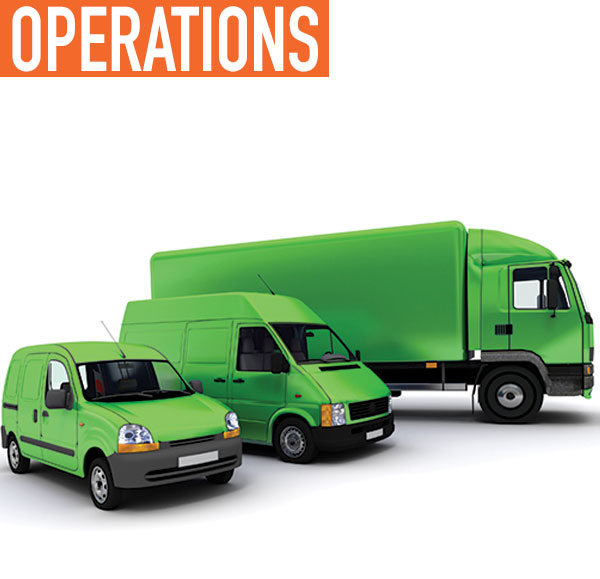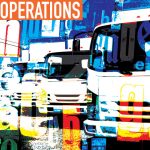EXPLORING ALTERNATIVE ENERGY SOLUTIONS: Part 1 of 3
Do you consider your company to be innovative and an early adopter that integrates advanced technology and alternative energy into its fleet? Or is your company less of an innovator but still interested in alternative energy integration? There are many reasons to consider alternative fuels for your fleet, but it’s important to decide if the decision is even feasible for your business.
The Green Truck Association offers key considerations below for those looking to integrate alternative energy/advanced technology into their fleet, including modification factors and the certifications and standards required.

CONSIDER THE FACTORS
When considering the right alternative energy/advanced technology for your fleet, it is helpful to keep the following factors in mind:
- Vehicle brand preferencesAll vehicle manufacturers take slightly different approaches to developing alternative energy/advanced technology offerings—especially fuel system and driveline modifications. These options, upfitter rules, and best practices can influence end user buying decisions in different ways.
- Model preferencesThe same factors affecting OEM brand selections can influence vehicle model or type choices. It is possible that specific vehicle brands and their models may not be available for the alternative energy/advanced technology solutions the end customer hopes to pursue.
- Body preferenceIt’s helpful for customers to first conduct a needs analysis for the body and required equipment. Then, they can review body mounting parameters for the chassis to determine if accommodations and customization are required from both a mounting and vehicle certification stance.
- Range factorsA driver’s daily range influences vehicle type, tank capacity, and alternative fuel consumption costs. End users often cannot afford the productivity loss created by the need to refuel twice a day.
- Payload considerationsAlong with range issues, payload becomes a decision driver: If a conventional internal combustion engine (ICE) driveline is operating above 85 percent of GVWR and/or 85 percent of storage space, additional fuel storage to ensure equivalence to ICE range can limit the onboard space and available payload the conventional truck provides.
- Drive and duty cycleA drive cycle defines how a vehicle is used, while a duty cycle explains how much a vehicle is used. When defining your fleet’s drive and duty cycles, remember vehicles can have different profiles that vary across time. For example, if your drive cycle data documents a vehicle operating primarily at high speeds with minimal stops and limited idling time, adapting a hybrid powertrain or an advanced idle management system may not be practical. Conversely, the use of an aero package combined with low rolling resistance tires and thorough chassis weight reduction plan may provide significant benefits.
- Available systems and technologyThe cost to create, validate, and certify an alternative energy/advanced technology system for any vehicle platform is quite extensive. For this reason, system providers carefully review the market volume potential, weighing it against development costs to ensure their companies receive payback. Therefore, it is important to consider the impact of alternative energy/advanced technology on the entire vehicle. For example, a potential purchaser of alternative fuels technology would want to consider whether a hardened engine package is available from the chassis manufacturer to account for the higher combustion temperatures and lower lubricity of alternative fuels. For vehicles that have LNG and CNG conversions, this has been an issue.
- Model year changesOEMs often make subtle changes to engine and powertrain operations, requiring recalibration and recertification on a model year basis. Some experienced manufacturers estimate that, depending on engine family changes, the recertification process can cost up to $300,000 if California Air Resources Board (CARB) certification is included. As vehicles must be available for this development, there is a lag between when a model year vehicle starts production and system conversions become available.
- Funding and grant optionsIn the last several years, funding to support alternative energy/advanced technology systems and fueling infrastructure has varied greatly at the federal, state, and local levels. It is suggested to plan alternative energy/advanced technology implementation without incentives and consider them a bonus of reduced payback or higher ROI. It’s also helpful to verify existence of fueling or charging stations on-site or nearby before initiating a project. If infrastructure is not in place and/or the project’s financial viability relies on incentives, successful implementation may be jeopardized. The US Department of Energy (DOE) is an excellent resource, featuring state and federal incentives by alternative fuel type. Learn more at afdc.energy.gov/laws.
- ROI factorsMany variables affect the financial success of a project. Below are some relevant factors:
- Replacement cycle time
- Lease length
- New versus existing vehicles
- Cost of alternative fuel conversion
- Fuel costs (price differential)
- Annual miles driven
- Reduction or increase in maintenance costs
- Routes requiring most fuel
- Vehicles consuming maximum fuel
- Applicable incentives
In terms of ROI, consider how long a customer plans to maintain ownership. A program’s success depends on positive cash flow before a vehicle replacement. Today’s fleet customers are keeping vehicles five to seven years. When considering these timeframes, it’s becoming more popular to obtain positive cash flow by looking only at fuel savings during vehicle life.

Integrating alternative fuels and advanced technologies into your fleet could be the perfect move for your business, but it could also pose problems. Learn more about alternative fuel/advanced technology integration next month in part 2 of Exploring Alternative Energy Solutions.
FOR MORE INFORMATION
The Green Truck Association (GTA) is an affiliate division of NTEA with the goal to continue the progression of green work trucks. The information from this article was adapted from GTA’s white paper, “Sustainable technology integration: Exploring alternative energy solutions.” Find out more, visit www.greentruckassociation.com.
MODERN WORKTRUCK SOLUTIONS: JANUARY 2019 ISSUE
Did you enjoy this article?
Subscribe to the FREE Digital Edition of Modern WorkTruck Solutions magazine.





